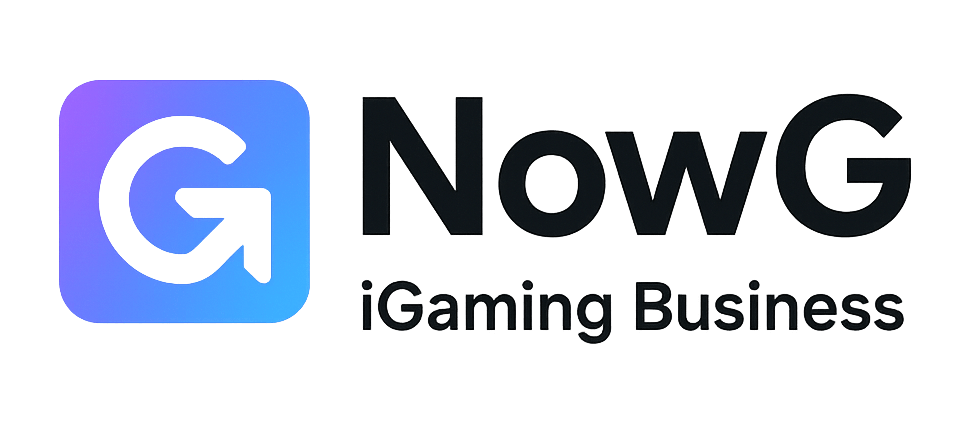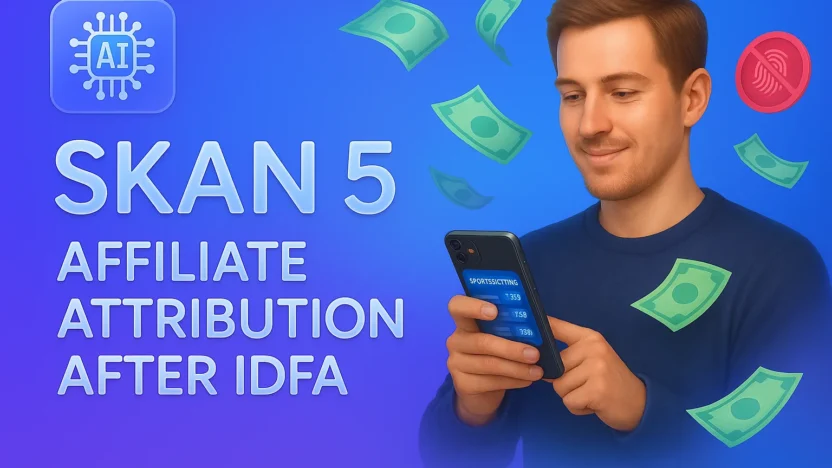Last Updated on November 22, 2025 by Caesar Fikson
If you run user acquisition or partnerships for a sportsbook, you’ve felt the shift: IDFA-based, user-level attribution on iOS is done. Opt-ins are too low, fingerprinting is a no-go, and the future is Apple’s privacy-preserving stack—practically, the “SKAN-5 era” everyone expected, delivered as AdAttributionKit (AAK).
From SKAN 4 to the AAK era (aka the “SKAN-5 world” we asked for)
Apple re-framed SKAdNetwork’s evolution under AdAttributionKit. The net effect: the features many of us expected from “SKAN 5” landed in AAK—better web-to-app support, re-engagement eligibility, overlapping and configurable windows, geo-level postback signals, and more flexible testing hooks. Translation for sportsbooks: you can finally align measurement windows to how bettors actually onboard (registration → KYC → first deposit → first settled bet) instead of bending product to one rigid timer.
Working model for 2026: treat “SKAN-5” as shorthand for the AAK-led, post-IDFA reality. Plan for AAK rules and timetables while staying compatible with SKAN concepts where needed.
How attribution works now ?
On iOS, attribution is event-level opaque and cohort-level observable. Eligible touches generate signed postbacks that include a source/campaign identifier and a conversion value you define. Richness depends on privacy thresholds. No device IDs, no last-click cookies. Your schema is the source of truth.
- Configurable windows. Under AAK you can overlap windows and tune cooldowns for re-engagement. Align postbacks to sportsbook milestones instead of the other way around.
- Web-to-app & re-engagement. Measurable in a privacy-safe way if your flows are compliant. Affiliates can start journeys on content and still get credit when the user converts in-app.
- Privacy thresholds. Small cohorts degrade signal. Broad enough campaigns and consistent creative taxonomies keep granularity.
Android is marching down a similar path with Privacy Sandbox. Winning teams converge on a cross-platform plan: AAK on iOS, Sandbox on Android, and server-to-server contracts in the affiliate channel to reconcile outcomes without user-level joins.
Operator checklist: what changes for sportsbooks
- Think in schemas, not users. Encode “money moments” into conversion values: verified registration, KYC pass, first deposit, first settled bet, net-revenue brackets.
- Adopt server-side truth. Postbacks prove influence; your CRM/ledger proves revenue and eligibility. Pay on contracted, windowed validation—CPA/Hybrid weighted by high-value codes—rather than last-click joins.
- Design data-friendly media. Creative and GEO choices now impact signal quality. Plan volumes and taxonomy to clear privacy thresholds.
Affiliate checklist: how to still win in a cookieless world
- Parameter hygiene. Clean sub-IDs that map to AAK source hierarchies or campaign slots. Expect to be paid on validated postbacks plus server-side revenue evidence.
- Web-to-app fluency. Build compliant flows from odds content, previews, calculators to App Store. Ensure operator stack can ingest and map postbacks back to your sub-IDs.
- Re-engagement playbooks. Event-led promos (opening day, derbies, playoffs) matter again if contracts reward reactivation postbacks, not just acquisition.
- Compliance first. No fingerprinting, no dark joins. Privacy-safe contracts and S2S validation = preferred partner status.
Why Scaleo is the Ultimate Software for Affiliate Sports Betting Tracking?
In the AAK world, your affiliate platform isn’t just a tracker—it’s the contract engine that binds media proof to finance proof. It must run cookieless, be API-first, ingest postbacks, express schema-aware payouts, and reconcile across platforms.
- Cookieless, S2S by design. Scaleo credits on signed touches and first-party events—no reliance on browser storage that iOS ignores.
- AAK/SKAN ingestion. Map Apple postbacks (and Android Sandbox reports) to offers, affiliates, and sub-IDs. Versioned mappings so schema changes don’t break historicals.
- Schema-aware payouts. Define conversion codes for KYC, FTD, first settled bet, revenue bands; pay by code and time horizon, not brittle user logs.
- Window & hold logic. Validation windows and cooldowns mirror AAK. Hold cohorts until risk clears; exclude restricted GEOs; release on ledger proof.
- Fraud controls. IP/device anomaly scoring, click flood detection, velocity checks; aggregate reconciliation to flag abnormal effective CPAs.
- Cross-platform normalization. One cohort view for finance across iOS AAK and Android Sandbox.
Designing a sportsbook conversion schema
Value is skewed, so your codes should be too. Early codes capture onboarding intent (registration + KYC in short windows).
Mid codes capture FTD thresholds and first settled bet. Upper codes approximate net-revenue bands in longer windows. Keep it simple enough to clear privacy thresholds: 8–12 business-meaningful codes beat a sprawling plan that collapses to coarse values.
During marquee events, shorten windows to reflect faster payback; in off-season, let them breathe.
Web-to-app without IDFA
Compliant web-to-app is measurable under AAK when the click carries Apple’s required parameters and your path respects privacy rules. For sportsbooks, that means editorial pages and tools can hand off to the App Store while preserving campaign/source context that returns in a postback. Your affiliate platform must accept those postbacks, match them to the click via the source identifier hierarchy, then evaluate business outcomes server-side. Scaleo maintains that linkage without cookies or device IDs.
Re-engagement meets the sports calendar
Betting is cyclical. AAK’s re-engagement eligibility finally reflects reality: ads often prompt a return, not a fresh install. Operators can set reactivation bounties tied to events, paid on postback evidence that a lapsed user returned and hit a schema code like “first settled bet this season.” Cooldowns reduce double-credit during busy sports weeks; Scaleo encodes those guardrails in payout rules so finance doesn’t fight cannibalization later.
Fraud, compliance, and gray-market gravity
Regulated iGaming can’t afford wishful attribution. Fingerprinting is a policy and platform risk. Low-volume sub-campaigns that never clear thresholds won’t produce usable signals.
Don’t bypass the rules—design into them. Use broader cohorts, ensure daily volume per source, standardize creative taxonomy, and enforce server-side KYC/AML and settlement verification before releasing payments. Scaleo’s fraud graph and anomaly alerts complement AAK by surfacing campaigns whose effective CPAs drift sharply from expected ranges.
Android parity: don’t build iOS in a vacuum
Privacy Sandbox on Android removes GAID from the attribution game and returns aggregate reports. Operators that make schemas rhyme across iOS and Android (even if fields differ) see faster optimization and cleaner finance. Scaleo rolls AAK postbacks and Sandbox reports into unified cohorts so partners and finance work from one ledger.
Implementation blueprint for 60 days
- Week 1–2: Define sportsbook schema (codes for KYC, FTD thresholds, first settled bet, rev bands). Align BI, CRM, finance on definitions.
- Week 3–4: Stand up AAK-compliant web-to-app and re-engagement flows. Map AAK source hierarchies to affiliate offers & sub-IDs in Scaleo. Configure validation windows, cooldowns, and holds.
- Week 5–6: Pilot two cohorts per GEO: one acquisition, one reactivation. Ensure creatives follow strict taxonomy. Monitor privacy tiers and adjust volumes. Ship fraud rules.
- Week 7–8: Renegotiate top affiliate deals to Hybrid or schema-weighted CPA. Publish dashboards that show postback cohorts vs ledger events. Lock finance sign-off on payout logic.
Bottom line
AAK doesn’t kill affiliate or performance marketing—it forces you to do it properly. Move from user-level myths to cohort-level confidence. Encode value in schemas, pay on validated outcomes, and centralize the contract in software built for privacy. That’s how sportsbooks and affiliates keep growing in 2026 without IDFA.
FAQ
Is AdAttributionKit replacing SKAdNetwork?
Practically, yes. AAK is Apple’s evolution of SKAdNetwork. It preserves SKAN’s privacy model while expanding capabilities like web-to-app and re-engagement with configurable windows. Plan for AAK going forward while keeping SKAN compatibility where your partners still rely on it.
How should a sportsbook structure conversion values under AAK?
Prioritize money moments: verified registration, KYC pass, first deposit tier, first settled bet, and net-revenue bands in later windows. Keep codes few and meaningful so cohorts clear privacy thresholds and media can optimize on early signals.
Can affiliates still get paid without IDFA or cookies?
Yes. Use clean parameters and compliant web-to-app flows. Operators map AAK postbacks to your sub-IDs and validate against server-side revenue within contracted windows. Hybrids and schema-weighted CPA work well in this model.
What breaks compliance in 2026?
Fingerprinting and dark joins. Also non-compliant ad copy (e.g., “risk-free”), GEO leakage into restricted states, and creative taxonomy chaos that collapses privacy tiers. Stick to privacy-safe contracts, strict copy, and volume per source to maintain signal.
Why use Scaleo instead of retrofitting a legacy tracker?
Scaleo is cookieless and S2S-first, ingests AAK/SKAN postbacks, expresses schema-aware payouts, mirrors AAK windows and cooldowns, and normalizes Android Sandbox—plus built-in fraud and anomaly detection. It’s designed for the AAK era, not patched into it.




